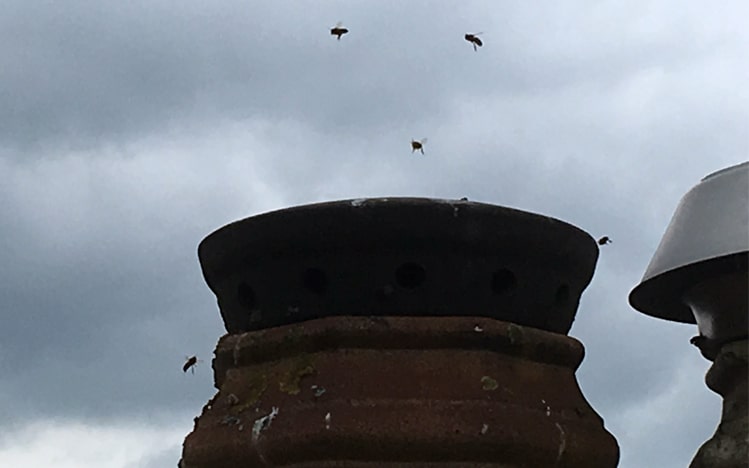
Swarms of Bees
Honey bees swarm at this time of year – late April to July – and are often mistaken for swarms of wasps and swarms of hornets. The queen and a mass of worker bees from a bee hive leave to find a new place to establish another bee hive, so you’ll see a lot of bees swarming as they fly to the site of the new bee hive: it can look pretty alarming like this bee swarm in Cupar, Fife.
The swarm often stops flying and settles down in places like chimneys, shop windows, fences, walls, on cars and in trees. The queen bee is at the centre of the mass of bees with the worker bees huddled around her, and scout bees from the swarm go away to look for a new place for the swarm to live. A settled swarm looks like a mass or carpet of bees and seems quite scary close up, but the bees in it are very quiet and won’t chase or attack you. The bee swarm will move on within 24-48 hours, or even less, so they’re best just left alone until they go. If they are in a place where they could cause a problem, such as on a fence next to a pavement, then we can arrange for a bee keeper to come and remove it for you.
Bee swarms often move into high roofs and chimneys to make a new bee nest but wasps live in wasp nests in roofs and chimneys too. If you see bees or wasps flying around the roof or chimney for more than 2 days then this indicates that the bees are making a new bee nest, or there is a wasp nest. If you suspect you’ve got a bee nest or a wasp nest on the roof or in the chimney and think it might be a problem then ring us for advice.
